
How Sarawak was won
By Dr Ooi Keat Gin
Comments by Sarawak Headhunter in red.
WHEN I first arrived at Kuching airport in May 1983, I was ushered into the row for foreigners at the immigration checkpoint where my Malaysian passport was examined and stamped “Social Visit”, with an expiry date. I felt like an “alien” despite knowing full well that Sarawak was part of the Federation of Malaysia. My feelings of alienness were, however, short-lived, quickly overcome by the friendliness and warmth of the locals I encountered.
Control over immigration was one of the numerous safeguards incorporated into the constitutional arrangements made when Sarawak, together with Sabah (then called North Borneo) and Singapore, joined the wider federation of Malaysia in 1963.
Again, here we have the unfortunate concept that Sarawak joined "the wider federation of Malaysia" instead of helping to form Malaysia. It was not Sarawak's idea of course, but if Sarawak had not been conned into supporting or supposedly supporting it, there would have not been a "Malaysia" and Sarawak would have become an independent nation.
Unfortunately these safeguards have proven to be ineffective against Malayan interference with Sarawak affairs and control over its oil and gas resources to its detriment. The Malayans (especially the ruling elite Malays) couldn't be bothered whether Sarawak remains poor and underdeveloped as long as they get what they want and whatever development supports what they want out of Sarawak.
The fact is that Malaya, together with its local bully boy, Taib Mahmud and the state BN, has become a burden upon Sarawak and an impediment to its continuing proper economic progress.
The only real safeguard that remains is Sarawak's control over immigration, but even then any attempt by the state to use it to really stop Malayan exploitation would probably invite a violent response from the federal authorities in the form of a declaration of emergency or other hegemonic response.
The question now is whether under such circumstances Sarawak can break free of the Malayan yoke?
The Malaysia Agreement
On July 9, 1963, Temenggong Jugah anak Barieng, Datu Bandar Abang Haji Mustapha, and Ling Beng Siew, as Sarawak’s representatives, penned their signature to the Malaysia Agreement in London.
Did they realise what they were signing and did they really represent Sarawak? Jugah in particular did not know how to read or write (according to a fairly authentic rumour he could sign his name by following a tattoo of it on the inside of his left forearm), Abang Mustapha was a representative of the Kuching Malays - seen by many Sarawakians as collaborators with the British colonial regime and Ling Beng Siew of the rich Sibu Foochow Chinese - who had nothing to lose and everything to gain.
The Federation of Malaysia was proclaimed on Sept 16 that year comprising the Federation of Malaya, Singapore, North Borneo, and Sarawak. The last three territories had been British Colonies until they gained their independence through participation in the wider Federation of Malaysia. Sarawak is poised to celebrate its 38th anniversary of independence on Sept 16.
Sarawak’s entry into Malaysia was a momentous event and a turning point in its historical development. A century of paternalistic governance by an English dynasty of White Rajahs (or kings, from 1841 to 1941), three years and eight months under Imperial Japanese military rule (1941 to 1945), and 17 years as a British colony did little to prepare the multi-ethnic population of Sarawak to face the challenges posed by the concept of “Malaysia”.
From the start there was no real concept of "Malaysia", but a very real Malayan hegemonic control and interference over the states of Sarawak and Sabah. Singapore rebelled and was rewarded by being kicked out of the federation, which turned out to be a much better thing for it. Sarawak and Sabah opted to remain under Malayan dominance and were rewarded by the crumbs of their own resources - the main bulk of which fuelled the modern development of Malaya and the greed and power of the Malayan elites.
UMNO dealt at will with these two states - which each supposedly had equal status with the Malayan states (as a whole) - until ultimately UMNO established direct rule over Sabah by using foreign illegal immigrants who had been illegally given citizenship and thus outnumbered the local Sabahan natives.
They did not have to do this in Sarawak since Taib Mahmud and the Sarawak BN kept the local populace in check through a feudal mixture of divide and rule, threat, coercion and intimidation and plain money politics.
Nonetheless, through the farsightedness of Sarawak’s leaders, the decisive decision was taken during those critical months between the announcement of the formation of Malaysia in May 1961 and its declaration in September 1963.
Farsightedness? Far from it! They didn't really know what they were doing and were outfoxed by the cunning Malayans.
Why Malaysia?
But what motivated the federation’s first prime minister, Tunku Abdul Rahman Putra Al-Haj, to propose in 1961 that “it is inevitable that we should look ahead to this objective and think of a plan whereby these (five) territories can be brought closer together in political and economic co-operation’’?
The initiative apparently came from the wishes of Singapore’s leaders. David Marshall, Chief Minister of Singapore during the mid-1950s, was keen for a merger but the Tunku then was reluctant. Then in 1959, when Lee Kuan Yew of the People’s Action Party assumed the chief ministership, he too proposed a Malaya-Singapore merger for economic and political reasons. The Tunku’s initial reaction was at best lukewarm. As the political Left in Singapore gained momentum, however, the Tunku began to warm up to Lee’s persuasive arguments of merger.
Although the Tunku and his Malay colleagues in the United Malay National Organisation (Umno) did not want to have a Left-leaning Singapore as their neighbour, neither did they wish for a merger with Chinese-dominated Singapore that would mean upsetting the racial arithmetic in favour of the Chinese.
The Borneo territories then became imperative components in the wider federation scheme. Nearly 70% of the nearly 1.3 million inhabitants (1960 census) of North Borneo, Brunei and Sarawak comprised Malay-Muslims and non-Muslim indigenous peoples, the Borneo territories were viewed favourably as a counterweight to Singapore’s Chinese majority. The racial factor, however, was not then publicly emphasised.
This racial arithmetic, however, hinged on an assumption: “that in extreme racial issues the indigenous population of Borneo might choose to align themselves with the Malays (of Malaya), to whom they were racially akin, rather than to the Chinese”. But there was no guarantee that the Borneo indigenes would swing to the Malays in times of crisis.
Being politically less-sophisticated and naive, they could of course be manipulated and coerced or intimidated into aligning themselves with the Malayans.
Awakening political awareness
But what was the response from the peoples of Sarawak to Tunku’s Malaysia scheme?
Post-war British governments were partial to the policy of disengagement from the colonies; if possible in an amicable and least traumatic manner. Against this background, the Tunku’s statement was received positively. In June 1961 Sir Alexander Waddell, Governor of Sarawak (1960-1963), and his counterpart in North Borneo, Sir William Goode (1960-1963), and D. C. White, High Commissioner for Brunei (1959-1963) were summoned for talks in Singapore with Lord Selkirk, Britain’s Commissioner General in South-East Asia (1959-1963).
Aware of the metropolitan government’s stance on de-colonisation, the British Borneo leaders did not oppose Malaysia, but they did suggest a two-step process: Borneo Federation (North Borneo, Brunei and Sarawak) prior to entry to the Malaysia confederation. In spite of Brunei’s suspicions, serious consideration was given to the Borneo Federation, if necessary between North Borneo and Sarawak alone.
Local Sarawak leaders like Datu Bandar Abang Haji Mustapha and Temenggong Jugah anak Barieng were also partial to a Borneo Federation. Therefore Tunku’s announcement took them by surprise. While others were in a state of bewilderment, Ong Kee Hui, Chairman of the Sarawak United People’s Party (SUPP) displayed forceful opposition towards Malaysia.
Ong, together with A.M. Azahari, leader of the Parti Rakyat Brunei (PRB), and Donald A. Stephens, later leader of the United National Kadazan Organisation (UNKO) formed a United Front to denounce Tunku’s proposal as “totally unacceptable to the people of the three territories”.
SUPP’s uncompromising stance received initial support from the Sarawak National Party (SNAP) led by Stephen Kalong Ningkan who maintained that, “Any attempt to put Sarawak under the influence and subjection of any foreign power would be strongly opposed.”
That foreign power was and still is Malaya.
That foreign power was and still is Malaya.
But following the digestion of further explanations from Tunku, who paid brief visits to Sarawak in July-August 1961, those who initially were sceptical or had reservations were won over. Moreover, urged by Mustapha, Tunku invited leaders from Sarawak and North Borneo to visit Malaya on a fact-finding mission.
This was all part of the con-game, but Sarawakian leaders and most Sarawakians themselves didn't realise it then.
The Borneo visitors were awed by Kuala Lumpur and were especially impressed with the Malayan Government’s achievements in rural development. Many returned convinced that entry into Malaysia was a good idea. Meanwhile, Waddell had sent local Sarawak leaders (members of Council Negri) to participate in the Commonwealth Parliamentary Association Conference in Singapore in July 1961. At this forum the Sarawak leaders had the opportunity to discuss the Malaysia proposal face-to-face with their Malayan and Singaporean counterparts.
Little did they realise that Malaya had then reached the limit of its economic resources and required a new pool of resources upon which to further develop itself, and which was to be provided by Sarawak and Sabah at their own expense and to their own detriment.
Little did they realise that Malaya had then reached the limit of its economic resources and required a new pool of resources upon which to further develop itself, and which was to be provided by Sarawak and Sabah at their own expense and to their own detriment.
It was here that Sarawak leaders began to emphasise the need for conditions in the form of safeguards to protect the rights and interests of the peoples of Sarawak. Consequently, it dawned on the Sarawak leaders that they were directly involved in the deliberation of the fate of the territory – Sarawak – that they had long called their home. This awakening of political consciousness was further developed in the follow-up discussions at the Malaysia Solidarity Consultative Committee which held meetings between August 1961 and February 1962.
One of the main safeguards which they forgot was to keep their petroleum resources for themselves. The Malayans were glad to be silent on this, since they knew that under international law, offshore petroleum resources belonged to the federal government.
The growth of political awareness among the leaders of Sarawak accelerated the formation of political parties and the development of party politics. Prior to Tunku’s announcement in May 1961, only two political parties existed: the Sarawak United People’s Party (SUPP) established in June 1959, and Party Negara Sarawak (Panas) in April 1960.
By the time local council elections were held in June 1963, four more parties were established, namely Sarawak National Party (SNAP, April 1961), Barisan Raayat Jati Sarawak (Barjasa, December 1961), Sarawak Chinese Association (SCA, July 1962), and Party Pesaka Anak Sarawak (Pesaka, August 1962).
The political parties, despite claims by some to be multi-ethnic, were established on communal and geographical lines. All political parties adopted a pro-Malaysia stance except SUPP, which preferred self-government, Borneo Federation, and only then Malaysia.
And so, the political parties took the pros and cons of the Malaysia proposal to the kampungs and longhouses.
The Malay-Muslim communities (Malays and Muslim Melanaus) although split into two camps – Panas led by the traditional Kuching elite and Barjasa by the intelligentsia of the Sibu area – in general supported Malaysia. However, Malay-Muslim groups in Miri, Limbang and Lawas, together with the Kedayans, rejected Malaysia; instead they shared Azahari’s and the PRB’s aspirations.
Traditional Iban leaders of the Rejang led by Jugah (Pesaka’s leader) were partial to Malaysia.
Stephen Kalong Ningkan and his better-educated colleagues from Simanggang and the Saribas area stressed safeguards and conditions in considering Malaysia.
The Kayans and Kenyahs opposed Malaysia. They were apprehensive of being dominated by their traditional enemies, the Ibans.
The Chinese in SUPP that were influenced by Leftist elements forcefully rejected the Malaysia proposal as a neo-colonial scheme designed to perpetuate British hegemony in South-East Asia. Malay, Iban and Bidayuh members of SUPP also towed the party line.
In reality it was a scheme cooked up by the Malayans to replace British hegemony with Malayan hegemony.
In reality it was a scheme cooked up by the Malayans to replace British hegemony with Malayan hegemony.
The SCA was a refuge for those Chinese who thought Malaysia was advantageous to Sarawak’s economy. But among the large majority of Sarawak’s multi-ethnic inhabitants, in particular those in the rural districts, there was little understanding of the Malaysia proposal and its implications.
This being the case, could there be any real acceptance by the majority of Sarawakians of the so-called Malaysia proposal?
This being the case, could there be any real acceptance by the majority of Sarawakians of the so-called Malaysia proposal?
Of communism and predatory neighbours
By the later half of 1961 British Prime Minister Harold MacMillan (1957-1963) had given full support to the Malaysia proposal. The two-step process (Borneo Federation then Malaysia) was discarded.
In January 1962 a White Paper was published and European District Officers were instructed to emphasise to the local inhabitants the advantages of entry into Malaysia as against the uncertainties of the future, the dangers of communism, and the perils of predatory alien neighbours (Sukarno’s Indonesia). In a nutshell, the White Tuan “advised” the people that Malaysia “is good for you”.
A Commission of Enquiry chaired by Lord Cobbold was entrusted with the task of ascertaining the opinion of the general population in North Borneo and Sarawak on the Malaysia proposal.
The Cobbold Commission could not be said to represent a neutral body – three of its five members, including the chairman, were nominees of the British Government and the remaining two were nominated by the Malayan Government. (emphasis added)
Again, that being the case, its findings must be suspect.
The commission held hearings in camera (in order that the people shall speak openly) between Feb 19 and April 17, 1962. Members of the commission also attended to some 1,600 letters and memoranda submitted by individuals, organisations, and political parties.
“Barang ko’ nuan, Tuan” (Whatever you say, sir) was the reply of a Dayak to a question posed by Lord Cobbold. This response singularly represented the perplexed state of mind for the majority of Sarawak’s indigenous inhabitants when asked of the Malaysia proposal.
As pointed out by Puan Tra Zahnder, a member of Council Negri, most of the native population, “appear to know nothing or little about (the) Malaysia (proposal) but agree to it because they have been told that Malaysia is good for them.”
Ignorance was bliss, but certainly not any more.
The verdict
The Cobbold Commission published its findings in Report of the Commission of Enquiry, North Borneo and Sarawak in August 1962. The report did acknowledge that “there are large sections of the population in the interior who have no real appreciation of the Malaysia proposals”.
Overall, the results of the commission were summarised as follows:
“About one-third of the population ... strongly favours early realisation of Malaysia without too much concern about terms and conditions. Another third, many of them favourable to the Malaysia project, ask, with varying degrees of emphasis, for conditions and safeguards varying in nature and extent ... The remaining third is divided between those who insist on independence before Malaysia is considered and those who would strongly prefer to see British rule continue for some years to come.
There was no real referendum, in fact no referendum at all, and these figures are too vague upon which to have drawn any conclusions.
Cobbold expressed a cautionary note:
“It is a necessary condition that, from the outset, Malaysia should be regarded by all concerned as an association of partners, combining in the common interests to create a new nation but retaining their own individualities. If any idea were to take root that Malaysia would involve a ‘take-over’ of the Borneo territories by the Federation of Malaya and the submersion of the individualities of North Borneo and Sarawak, Malaysia would not, in my judgement, be generally acceptable or successful.” (emphasis added)
Unfortunately that is what has come about and that is the situation we are at right now.
An Inter-Governmental Committee, as recommended by the Cobbold Commission, was set-up. It was in the committee that the details of constitutional arrangements incorporating the conditions and safeguards for North Borneo and Sarawak – as negotiated by their leaders – were worked out. Jugah and Mustapha played pivotal roles as representatives of Sarawak.
How could an uneducated Iban and a Malay collaborator with the British negotiate anything on behalf of Sarawak?
Unfortunately that is what has come about and that is the situation we are at right now.
An Inter-Governmental Committee, as recommended by the Cobbold Commission, was set-up. It was in the committee that the details of constitutional arrangements incorporating the conditions and safeguards for North Borneo and Sarawak – as negotiated by their leaders – were worked out. Jugah and Mustapha played pivotal roles as representatives of Sarawak.
How could an uneducated Iban and a Malay collaborator with the British negotiate anything on behalf of Sarawak?
The pertinent safeguards include: religious freedom, status of the English language, immigration, land, representations in the federal House of Representatives and Senate, special status and privileges of indigenes, and disbursement of development grants.
Local council elections were held in June 1963. The elections, to all intents and purposes, were a referendum on the issue of Sarawak’s entry into Malaysia.
The Sarawak Alliance formed in August 1962 comprising of Panas, Barjasa, Pesaka, SCA, and SNAP won on a pro-Malaysia stance. But despite standing on an anti-Malaysia platform and facing allegations of being infiltrated by Leftist elements, SUPP managed a commendable showing.
Owing to pressure from the Philippines and Indonesia, another assessment of public opinion and a verification of the electoral results of December 1962 in North Borneo and of June 1963 in Sarawak were undertaken by the United Nations Malaysia Mission headed by Laurence Michelmore. The mission conducted its duties from Aug 16 to Sept 5, 1963. Once again the opinions of the general population of Sarawak were consulted on the issue of Malaysia.
The United Nations Malaysia Mission Report made public on Sept 13, 1963, confirmed that the entry in the proposed Federation of Malaysia was “... the ‘result’ of the freely expressed wishes of the territory’s peoples acting with full knowledge of the change in their status, their wishes having expressed through informed and democratic processes, impartially conducted and based on universal adult suffrage”.
Nonsense! There was no such thing in those days and even today the electoral process is dubious and fraught with fraud and unethical practices committed by Taib Mahmud and the BN government. A truly independent referendum held today completely uninfluenced by the Malayans or the BN regime and their corrupt practices would show an overwhelming majority of Sarawakians wanting out of Malaysia.

Therefore, on Sept 16, 1963, Sarawak achieved its independence through Malaysia – and a new chapter in its history began.
A chapter of a change of colonial master from the British to the Malayans. Next chapter - independence for Sarawak.
Dr Ooi Keat Gin is author of Japanese Empire in the Tropics Vol 1 and 2 (Ohio University Press, 1998) and Rising Sun Over Borneo (Macmillan/St Martin’s Press, 1999). He is a lecturer in Universiti Sains Malaysia’s School of Humanities and a Fellow of the Royal Historical Society of Britain.








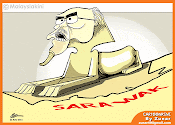

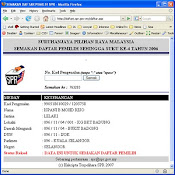















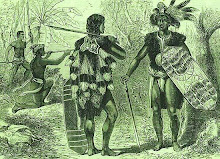





















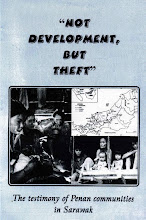
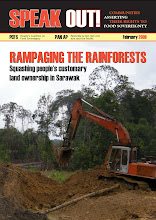





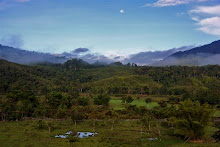



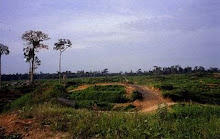

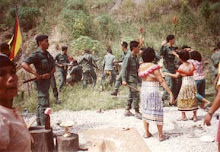





















14 comments:
Headhunter
The late Nordin Sopiee's PhD contained his surmise that the Americans were pushing the Brits to make sure that Sarawak, in particular, was to be co-opted into the larger Malaysian federation. That was the era of the domino theory where Southeast Asian countries were feared to be ripe for toppling like nine-pins into Communism. And, Sarawak, at the time, was under intermittent guerilla attacks by the commies, especially in the Sri Aman (then known as Simanggang) area.
So, I agree with you that the Cobbold Commission had a preset agenda to push for a positive referendum outcome; positive for the Western Powers.
Until today, I am sceptical about Tunku's proud boast that he had an epiphanic moment of inspiration to form Malaysia. I think the idea was gently inserted into his head over gin and tonic by CIA and MI-5 operatives.
But, here we are in 2008. Any chance of ngap sayot?
...you got it ctcho ! Even the design of the Malaysian flag...the Jalur Temberang....an offshoot of the American Glorious Stripes! The idea of forming Malaysia as hatched by the cold-war era America and G.Britain intelligence operatives was fine but the present circumstances...with the Malayans subjugating the East Malaysians, degrading them into inferior citizens.....doesn't work well! The present batch of East Malaysian ""leaders"" will be phased out....the children of Sabah and Sarawak are praying for the emergence of genuine people's set of leadership that will lead them out of this prison!
Gunung Kinabalu
Malayan Or UMNO/BN Rules:
-No freedom of religion, and minority
were force to be a muslim if they
married to a muslim.
-Non-Muslim is not allowed to be
Chief Minister and Prime Minister.
-Don't questions 'Ketuanan Melayu'.
There are many more injustice commited Malayan/UMNO/BN. We as a Sarawakians and Sabahans who know about all this injustice commited by Malayan/UMNO, had a responsibility to tell our people in the Citys and in the Longhouses. Tell them there is a way out from this injustice, that is our state Sarawak and Sabah should get out from Malaysia. We Sarawakians and Sabahans should never ever stop convincing our people untill our state Sarawak and Sabah get out from Malaysia!!. Remember no independence mean, no freedom of religion and no justice for all!!. No independence also mean no money from our oil and gas profits use to build and give 'Clean water and Elektricity 24 hour' for Longhouses people and no Tar-sealroad connecting all Longhouses to the big City !!
Interesting history read
I wonder if Dr Ooi Keat Gin is a medical doctor or a Ph D doctor. If the latter, he is a real disgrace to whichever university conferred on him his Ph D. If the former, not that bad but still inexcusable for a tertiary-educated person. Imagine still thinking and believing that Sarawak joined the wider federation of Malaysia in 1963, when as pointed out by Sarawak Headhunter, Sarawak joined North Borneo, Malaya and Singapore in forming the proposed Federation of Malaysia.
Anyway following are my brief recollections of Malaysia in respect of Sarawak and North Borneo. I was still in school when Malaysia was formed in 1963 after some kind of referendum which indicated that a clear majority of people in Sarawak and North Borneo were in favour of joining the proposed Federation of Malaysia. I had never met or known anyone from Sarawak and North Borneo until the following year (1964) when I entered an overseas University. Met and came to know quite a number of fellow Malaysians from Sarawak and Sabah in University and my impression was that their attitude towards our new nation did not quite tally with the results of the referendum on joining the proposed Malaysia. Most of them did not even want to join the Malaysian Students Association and instead continued with their Sabah and Sarawak Students Association. The students from Singapore did not hesitate joining those of us from Peninsula Malaysia in forming the new Malaysian students association.
However I must also point out that on a personal basis the Malaysians from Sabah , Sarawak, Singapore and Peninsula Malaysia got along just fine.
I am not going to say that the referendum was rigged. Perhaps, as pointed out by Sarawak Headhunter, the people of North Borneo and Sarawak were "Conned Into The Formation Of Malaysia".
MALAYSIA WAS BORN
“It had always been the cherished aspirations of the Sarawakian to be able to govern themselves and decide their own destiny. Thus, the decision to accept the proposal by our Nation’s founding father, Tunku Abdul Rahman Putra Al-Haj, to become part of Malaysia, was made by the people of Sarawak, on the strict understanding that the special interests of the state wouild be safeguarded. I had personally spoken in th Council Negri 1962, when debating on the resolution to adopt the Cobbold Commisiosn Report and for Sarawak to join the new Federation, that Sarawak would agree to form part of Malaysia, on the strict condition these safeguards were to be given and that they must not be taken away according to the whims and fancies of the Federal Government.
Sarawakians, at that time, have noted the Cobbold Commission’s recommendation that Sabah and Sarawak would be come part of the new Federation as equal partners of the states of the Federation of Malaya – not as one of the component States, but as an entity in partnership with Malaya. Thus the original Article 1 of the Federation Constitution which came into force on Malaysia Day reads:
(1) The Federation shall be known , in Malay and in English, by the name Malaysia.
(2) The States of the Federation shall be –
(a) the states of Malaya, namely, Johore, Kedah, Kelantan, Malacca, Negeri Sembilan, Pahang, Penang, Perak, Perlis, Selangor an Terengganu; and
(b) the Borneo States, namely, Sabah and Sara wak; and
(c) the State of Singapore.
Now, four and a half decades have elapsed since the birth of Malaysia. Few of my generations who worked to garner support both wihtn the country and outside (I was part of the Malaysian delegation to Afro-Asian countries to explain and build up support for Malaysia in the face of Soekarno’s Confrontasi policy aginst Malysia), are still alive to bear witness to the negotiations and meetings that eventually agreed upon the conevnatns and undertakings given by boht the then Malayan and British Governments for Sabah and Sarawak tyo achive their independence through Malaysia. As Tunku rightly pointed out, our two States would not have agreed to subsitute one form of colonism to another.”
These are the words of Datuk Amar James Woong Kim Min in his introduction to his book “The Birth of Malaysia”, Third Edition, 2008.
These assuring words if could be cast in stones would give more confidence and comfort to the Sabahans and Sarawakians.
But four and half decades on, we wake up from our slumber to find out that we have been failed in many areas. One of the many instances is as follows:
# Under the present Federal Constitution Sabah and Sarawak are just two among the 13 states of Malaysia. The new Article 1 is as follows:
(1) The Federation shall be known , in Malay and in English, by the name Malaysia.
(2) The States of the Federation shall be Johore, Kedah, Kelantan, Malacca, Negeri Sembilan, Pahang, Penang, Perak, Perlis, Sabah, Sarawak, Selangor and Terengganu;
Paul Raja
Interesting article but too much spin and factual distortions. My grandfather was part of the team that was involved in the negotiation and what nya suseee about Sarawak entry into Malaysia was totally different from the above. Nang senang nok molah cerita macam diatas bila sidak terlibat rame dah meninggal. merik malu jak sapa yg setuju dgn artikl tok. Jgn sidak lupak rame urang (malaya ngan sarawak) juak hilang nyawa melawan sidak komunis ngan indonesia nyerang Sarawak dlm tahun 60-70han. kita dah lebih 40 tahun dlm malaysia. banyak juak kemajuan kita ada di sarawak. aku pun terhutang budi dpt pemande dari perintah...
Sabah, Sarawak and Singapore formed Malaysia and never 'joined the wider federation of Malaysia'. Malaysia Agreement should have been revised after Singapore ceased to be in the party.
Dayak must be Raised. As the borneon native, the iban's, melanau, lunbawang, kadazan, dusun, murut and all the borneon native should be united. by the way, why our leader always TAMAK HALOBA???
Brunei was fortunate not to join Malaysia at the last minutes thanks partly to the opposition and short-lived rebellion by the PRB
Hello, I understand that this discussion is long over, but I would just like to give my 2-sen worth.
Malaysia has been Malaysia for so long. Why still the fight for Sarawak independence? Why not let's work together and bring MALAYSIA forward?
It has not been a Malayan hegemony that is suppressing Sarawak. It has been an UMNO hegemony. 5 states in West Malaysia has already spoken up against the hegemony. Sarawak can too.
Even with independence, trade integration and openness is very important for economic growth. So instead of souring the relationship with West Malaysia, why not vote in a government of your choice, and work towards economic growth with West Malaysia?
It's time for all of us Malaysians (east or west) to unite against all sorts of hegemony and corruption.
oh kaban, bisi versi jako iban artkel nuan tok, awak ke bala iban ke enda nemu jako org putih maca ia.. tq
TO KNOW THE REAL HISOTRY OF HOW SARAWAK AND SABAH WERE CONNED INTO THE GRAND DESIGN OF MALAYSIA , PLEASE READ :
WWW.SCRIBD.COM THE MAKING OF THE FEDERATION OF MALAYSIA :
BRITISH DOCUMENTS ON THE END OF EMPIRE
General Editor S R Ashton
Project Chairman A N Porter
Series B Volume 8
Malaysia
Editor
A J STOCKWELL
Published for the Institute of Commonwealth Studies
in the University of London
London:
Sarawak Headhunter,
Excuse a late comment without yet reading Chong Ling Tan's reference.
Born in Sarawak, while my father helped sort out Sarawak for independence or joining north Borneo, much of the above rings true. As a kid, i understood: Sarawakians were given the choice of joining Brunei, Indonesia or Malay states, and the later was not expected, so some changes were made. At my father's funeral (25 years back), mention was made of the US pressure on Britain to keep Singapore as a base for Vietnam, and that Indonesia was not included in the talks because the US was anti-Communism at that time, rather than anti-Islam.
Excuse a kid's view of a complex and sensitive situation across many languages/cultures.
There are a couple of newspaper cuttings i can email you, if you like.
Post a Comment